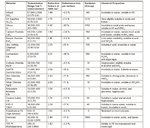Liamlambchop
Member level 2

Hey guys,
I am looking to buy a IR beam emitter (is this known as an IR LED?) and a photodiode sensor to go with it.
I am going to be using them outside and they will be used for a people counting device. The setup will be thus:
When people walk through the beam, IR radiation to the photodiode is momentarily stopped, and an arduino, which is connected to the photodiode, will recognise this as a count. The arduino will then output that data to a GSM modem, which will send the info to a webpage server.
What IR beam emitter and photodiode do you recommend I buy? I've noticed that there are a whole lot of IR LEDs which emit IR at a whole lot of different wavelengths, and likewise for photodiodes and receiving the IR. How do I know what wavelength I should buy? I need something that'll be very durable, because it'll be used outside in rain, hail, and shine.
Thanks!!
I am looking to buy a IR beam emitter (is this known as an IR LED?) and a photodiode sensor to go with it.
I am going to be using them outside and they will be used for a people counting device. The setup will be thus:
When people walk through the beam, IR radiation to the photodiode is momentarily stopped, and an arduino, which is connected to the photodiode, will recognise this as a count. The arduino will then output that data to a GSM modem, which will send the info to a webpage server.
What IR beam emitter and photodiode do you recommend I buy? I've noticed that there are a whole lot of IR LEDs which emit IR at a whole lot of different wavelengths, and likewise for photodiodes and receiving the IR. How do I know what wavelength I should buy? I need something that'll be very durable, because it'll be used outside in rain, hail, and shine.
Thanks!!




